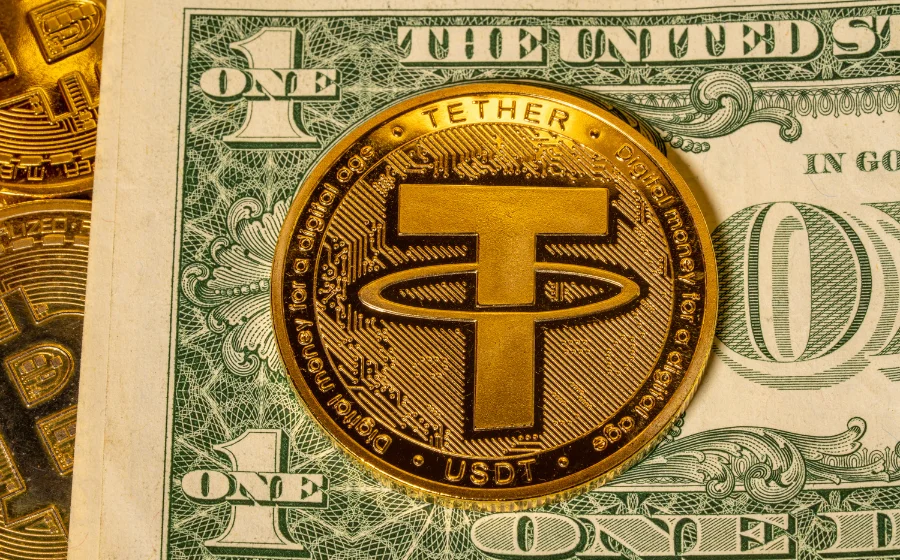
KEYTAKEAWAYS
- Tokenized Stocks provide blockchain-based access to traditional equities with benefits like 24/7 trading and fractional ownership.
- They may be asset-backed or synthetic, each offering different exposure, risk levels, and regulatory considerations.
- While offering accessibility and speed, Tokenized Stocks face challenges like limited liquidity, custody reliance, and unclear regulatory frameworks.

CONTENT
Tokenized Stocks are blockchain-based representations of real company shares, offering 24/7 trading, fractional ownership, fast settlement, and global access—but with evolving regulations and risks.

WHAT ARE TOKENIZED STOCKS?
Tokenized Stocks are digital representations of traditional company shares issued on a blockchain. Instead of relying solely on broker accounts or centralized stock exchanges, investors can gain exposure to real-world equities through blockchain-based tokens.
In most cases, each token reflects the market price of the underlying stock and is backed 1:1 by real shares held by a regulated custodian. In other scenarios, Tokenized Stocks may use synthetic mechanisms—such as financial derivatives or oracle price feeds—to mirror stock price movements without holding the actual asset.
Since they’re built on blockchain networks, Tokenized Stocks enable features that traditional finance cannot offer, including:
- 24/7 trading availability
- Fractional ownership rather than whole-share requirements
- Access for global users without geographic restrictions
However, they also come with trade-offs. Liquidity may be limited compared to traditional markets, and most tokenized versions do not include shareholder rights like voting. Regulatory frameworks are still evolving, and rules vary significantly across jurisdictions.
📌 Types of Tokenized Stocks
Today, Tokenized Stocks generally fall into two main categories:
1️⃣ Asset-Backed Tokens
These are issued by regulated entities that purchase and custody real shares.
- The token tracks the real-world market price
- Backing is often confirmed through periodic audits
- Provides more direct exposure but remains tied to regulatory compliance
2️⃣ Synthetic Tokens
Synthetic versions do not hold the underlying stock. Instead, they rely on:
- Derivatives
- Blockchain oracles
-
Smart contract models
to replicate price movements.
While they deliver similar price exposure, synthetic Tokenized Stocks may present higher counterparty and stability risks.
>>> More to read: What Are Soulbound Tokens (SBT)?
HOW TOKENIZED STOCKS WORK
The lifecycle of Tokenized Stocks involves several coordinated steps — from custody and issuance to trading and redemption. Each stage ensures that the digital token accurately reflects the value and backing of the underlying real-world equity.
✅ Custody
The process begins with a licensed financial institution purchasing and securely storing real shares of publicly traded companies. These shares are held under regulated custody and serve as the backing for the tokens issued on the blockchain.
Custodians must comply with the securities regulations of their jurisdiction. To maintain transparency and trust, they typically conduct routine audits and publish proof-of-reserves reports. These reports ensure the number of circulating tokens matches the number of real shares held in custody.
✅ Tokenization & Issuance
Once the assets are custodied, the issuer mints blockchain-based digital tokens representing the underlying shares. These tokens track the real stock price and rely on oracle data feeds to ensure accurate pricing across markets.
Services like Chainlink often provide:
- Verified price feeds
- Proof-of-reserves verification
- Cross-chain communication via CCIP
These infrastructure layers ensure pricing consistency for Tokenized Stocks, even when they trade across multiple blockchain networks such as Ethereum and Solana.
✅ Trading
After issuance, Tokenized Stocks can trade on centralized exchanges (CEXs) and decentralized platforms (DEXs). Because they exist natively on blockchain networks, they can move freely like any other digital asset.
Trades are executed and settled through smart contracts, with every action recorded immutably on-chain. This structure enables fast settlement times and transparent transaction history.
✅ Redemption
Holders may redeem their Tokenized Stocks based on the current value of the underlying shares. Redemptions can convert the tokens into stablecoins or fiat currency, depending on the platform.
When redemption occurs, the corresponding tokens are permanently burned. This maintains a 1:1 alignment between total token supply and the number of custodied shares — ensuring the backing remains accurate and auditable.
>>> More to read: What Are Exchange Tokens & How Do They Work?
BENEFITS OF TOKENIZED STOCKS
Tokenized Stocks introduce a new way to access traditional equity markets using blockchain infrastructure, offering several advantages over conventional stock trading
▶ 24/7 Trading: Unlike traditional stock markets with limited opening hours, Tokenized Stocks can be traded anytime. Investors can react instantly to global events without waiting for markets to open.
▶ Fractional Ownership: Tokenization makes it possible to purchase partial shares instead of full units, lowering entry barriers and making blue-chip stocks more accessible to smaller investors.
▶ Global Accessibility: Users can access Tokenized Stocks via blockchain-based platforms without requiring a local brokerage account or lengthy onboarding processes. However, availability may still depend on regional regulations and licensing requirements.
▶ Faster Settlement: Since transactions settle on-chain, execution can finalize within seconds — significantly faster than traditional settlement cycles, which often take two to three business days.
▶ DeFi Integration: Tokenized Stocks can interact with decentralized finance protocols. Investors may use them as collateral, provide liquidity, or integrate them into yield strategies, expanding beyond passive holding.
>>> More to read: Should You Dollar-Cost Average Into Bitcoin? Pros & Cons
TOKENIZED STOCKS RISKS & CHALLENGES
While Tokenized Stocks offer a more flexible and digital-native way to access traditional equities, they also introduce unique risks that investors must understand.
Regulation remains the biggest uncertainty — rules differ widely across jurisdictions and may affect issuance, trading, or accessibility for certain users.
Additionally, while Tokenized Stocks provide exposure to the price of the underlying shares, they typically do not grant traditional shareholder rights such as voting or participation in corporate governance.
Operation depends on custodians, issuers, and smart contract execution. Failures in custody management, oracle feeds, platform governance, or contract vulnerabilities may impact price stability or asset security.
Liquidity can also be limited, as the market for Tokenized Stocks is still emerging. Large trades may be difficult to execute without affecting price.
Before participating, investors should evaluate platform reliability, regulatory compliance, and applicable local laws — and perform proper due diligence.
✏️ Conclusion
Tokenized Stocks sit at the intersection of traditional finance and blockchain innovation, offering a more flexible, borderless, and modern way to access equity markets. Features such as fractional ownership, faster settlement, and 24/7 trading make them especially appealing for users bridging into digital asset ecosystems.
However, as a relatively new product category, they come with meaningful considerations: evolving regulations, custody dependencies, technical risks, and liquidity constraints.
Investors should take time to understand how these assets work, follow regulatory developments, and only allocate capital aligned with their risk tolerance.

















